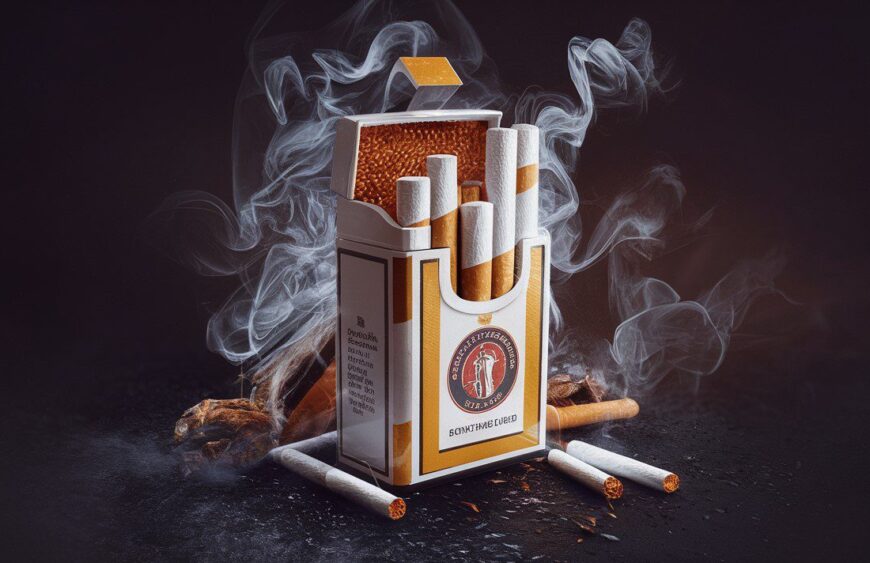Decoding Canadian Classics Silver: Marketing “Light” Cigarettes in Canada


In the vast landscape of tobacco products, Canadian Classics Silver cigarettes emerge as a formidable contender in the realm of “light” or “silver” cigarettes. Praised for their diminished tar and nicotine content, these products have captured the attention of consumers. However, beneath their seemingly benign facade lies a labyrinth of marketing strategies, cultural perceptions, and public health ramifications.
Exploring Marketing Tactics
The allure of Canadian Classics Silver extends beyond their purported health benefits, deeply entrenched in the meticulously crafted marketing strategies of tobacco corporations. Through savvy branding, sophisticated packaging, and targeted advertising endeavors, these cigarettes are positioned as the epitome of sophistication for health-conscious consumers. By intertwining their products with notions of elegance, refinement, and modernity, tobacco companies seek to appeal to a diverse demographic, including young adults and women.
Analyzing Cultural Perspectives
Despite concerted efforts to depict “light” cigarettes as a safer option, cultural perspectives surrounding these products remain diverse. While some perceive them as a pragmatic choice for mitigating smoking-related health risks, others view them as a mere marketing gimmick designed to ensnare unsuspecting consumers. Furthermore, the normalization of “light” cigarettes in popular culture and media has fostered their acceptance among specific societal segments, perpetuating the misconception of their relative harmlessness.
Impact on Smoking Behavior and Public Health
The proliferation of “light” cigarettes has ignited fervent debates concerning their influence on smoking behavior and public health outcomes. While proponents argue that these products prompt smokers to reduce tobacco consumption or quit altogether, skeptics posit that they may inadvertently fuel nicotine addiction by fostering a false sense of security. Moreover, the continued availability of low-tar and low-nicotine cigarettes raises apprehensions about their potential role in perpetuating tobacco use and undermining efforts to reduce smoking prevalence.

Unraveling Regulatory Responses: Shedding Light on “Light” Cigarettes
Amidst mounting evidence revealing the deceptive facade of “light” cigarettes and their detrimental health repercussions, regulatory bodies have mobilized to confront this pressing issue. Initiatives encompassing the prohibition of misleading descriptors, the enforcement of stringent labeling prerequisites, and the imposition of restrictions on tar and nicotine concentrations endeavor to dismantle the marketing stratagems propagated by tobacco conglomerates. Furthermore, concerted efforts through public awareness initiatives and smoking cessation endeavors endeavor to enlighten consumers regarding the hazards inherent in all manifestations of tobacco consumption, inclusive of “light” cigarettes.
Conclusion
As we traverse the intricate landscape of tobacco consumption, the narrative surrounding Canadian Classics Silver cigarettes emerges as a poignant emblem of the tobacco industry’s complexities. These products, adorned with the moniker of “light” or “silver,” encapsulate not merely a commodity but a cultural artifact fraught with implications for public health and societal norms.
In our exploration of the labyrinthine corridors of tobacco marketing, we have witnessed the delicate interplay between perception and reality. Canadian Classics Silver cigarettes, with their sophisticated branding and enticing allure, stand as a testament to the persuasive prowess wielded by tobacco corporations. Yet, beneath the veneer of sophistication lies a shadowy verity—a truth obscured by the fog of marketing rhetoric and societal constructs.
The ramifications of “light” cigarettes extend beyond individual choices, echoing throughout the realms of public health and regulatory governance. As mounting evidence illuminates the deceptive nature of these products and their adverse health repercussions, regulatory bodies have taken decisive strides to mitigate their influence. Measures such as the prohibition of misleading descriptors and the enforcement of stringent labeling standards endeavor to dismantle the facade of safety propagated by tobacco entities.
However, our journey is far from its culmination. As we stand on the cusp of a new chapter in tobacco regulation, it is incumbent upon us to maintain unwavering vigilance in our pursuit of truth and transparency. By probing the intricacies inherent in the promotion and consumption of “light” cigarettes, we chart a course toward a future where health and integrity supersede profit and deceit.
Ultimately, the tale of Canadian Classics Silver cigarettes serves as a cautionary narrative—a reminder of the intricate nexus between commerce, culture, and conscience. Only through collective resolve and unyielding determination can we navigate the ever-evolving currents of the tobacco industry and carve a path toward a healthier, more equitable tomorrow for all.
FAQ
Are “light” cigarettes safer than regular cigarettes?
Although “light” cigarettes may contain lower levels of tar and nicotine compared to regular cigarettes, they are not necessarily safer. Smoking any type of tobacco product poses significant health risks, including lung cancer, heart disease, and respiratory issues.
Why do tobacco companies promote “light” cigarettes?
Tobacco companies advertise “light” cigarettes as a supposedly healthier option to regular cigarettes to attract health-conscious consumers and alleviate concerns about the negative health effects of smoking. However, these assertions have been widely challenged, leading regulatory bodies to take action to limit the use of deceptive descriptors.
Can “light” cigarettes assist smokers in quitting?
While some smokers may view “light” cigarettes as a means to gradually quit or decrease their tobacco intake, there is limited evidence supporting their effectiveness as a smoking cessation aid. Quitting smoking entirely remains the most reliable approach to enhance health outcomes and diminish the risk of tobacco-related illnesses.







